Supermicro SYS-111C-NR Internal Hardware Overview
Here is a quick overview of inside the system to help orient our readers as we go through this. One will notice that in the center there is an airflow guide. Generally, we prefer hard plastic airflow guides but this is a solution that we see in many 2U4N and 1U systems where height is a challenge.
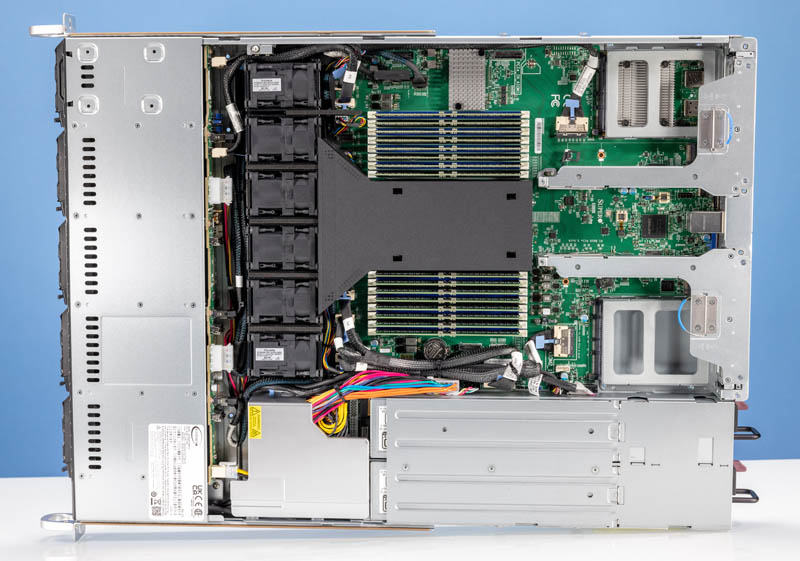
The fan partition is made up of six dual fan modules. These have to push a lot of air to cool the NVMe SSDs, CPU, and the rear I/O.
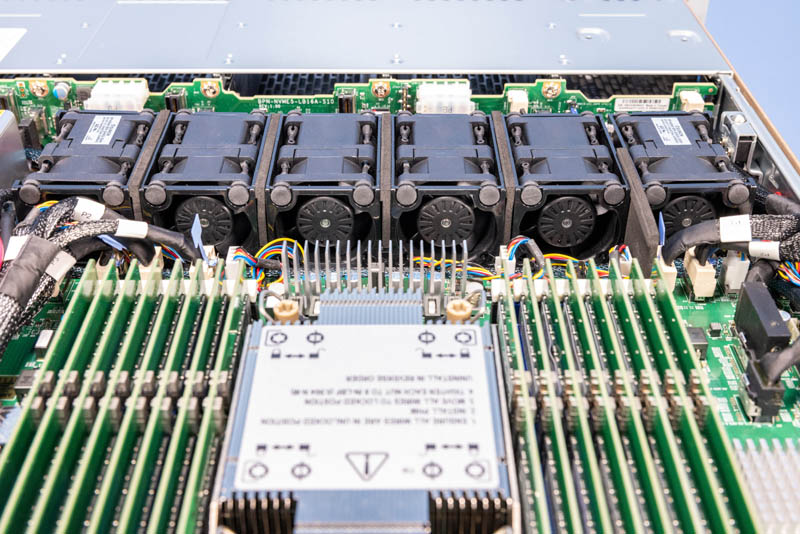
As a single-socket server, this system takes a 4th Generation Intel Xeon Scalable CPU (and likely a future 5th gen SKU since they are the same platform.) If you want to learn more about the 4th Gen Intel Xeon Scalable platform, codenamed “Sapphire Rapids” we have this article and video for you.
While many get caught up in the top-bin SKU stats, and this system can support up to 60 core SKUs, that may not be the most relevant here. The SYS-11C-NR with 32-core SKUs is a very potent platform for Microsoft Windows Server or VMware ESXi where the license costs are tied to per socket/ CPU configurations. Replacing older Xeon E5 or 1st/2nd Gen Xeon Scalable servers with a single socket solution can make more efficient use of 32-core license/ socket levels while also providing more performance per core. It also removes the need to have two sockets and the latency that can introduce.
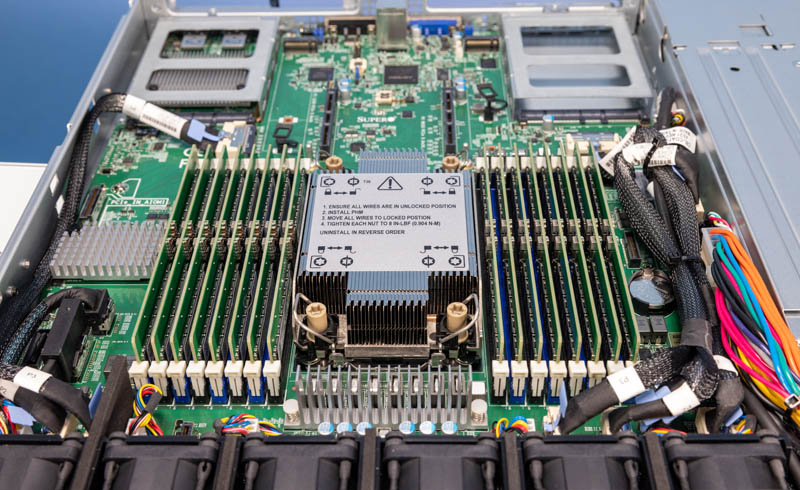
In terms of memory, we get 16x DDR5 DIMM slots that we have filled with two DIMMs per channel or 2DPC. When consolidating onto a single socket platform, having 16 slots is similar to a Xeon E5’s dual socket DIMM slot count.
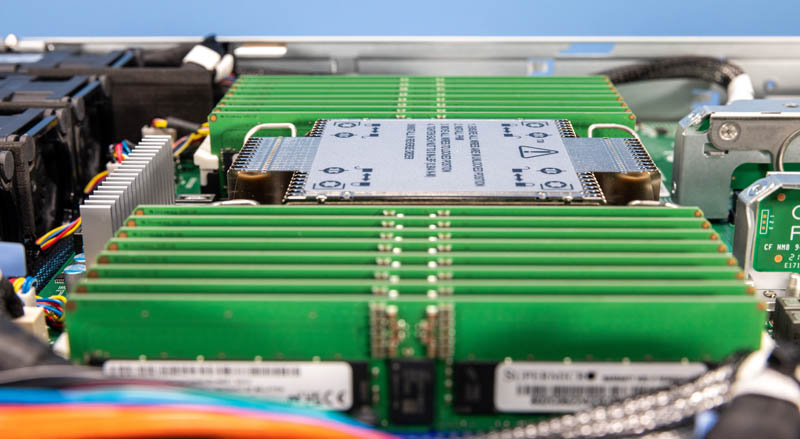
The fact that these are DDR5 slots means that we can get more memory bandwidth as we covered in Why DDR5 is Absolutely Necessary in Modern Servers. DDR5 is a large jump especially when looking prior to 3rd Gen “Ice Lake” Xeon servers.
Next to the DIMM slots, we get something very different. The Intel C741 “Emmitsburg” PCH is next to the DIMM slots. On most servers, this is behind the CPU and memory, but since this is a single-socket platform, it can be moved to the side to optimize airflow.
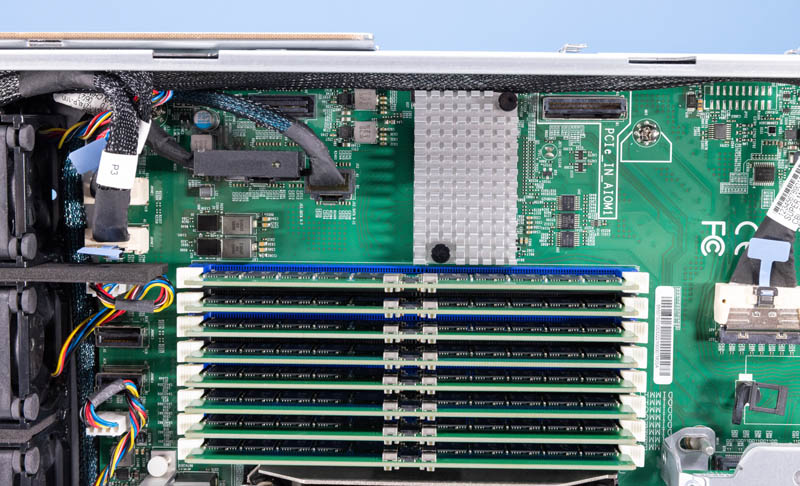
Behind the CPU, in the center, we get our ASPEED AST2600 BMC.
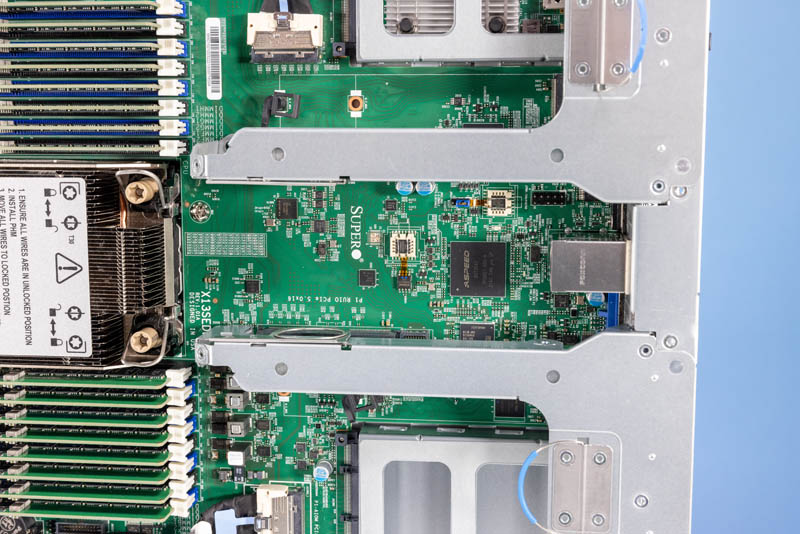
On either side of that BMC we get more symmetry. There are two internal M.2 SSD slots as well as two OCP NIC 3.0 and two riser slots.
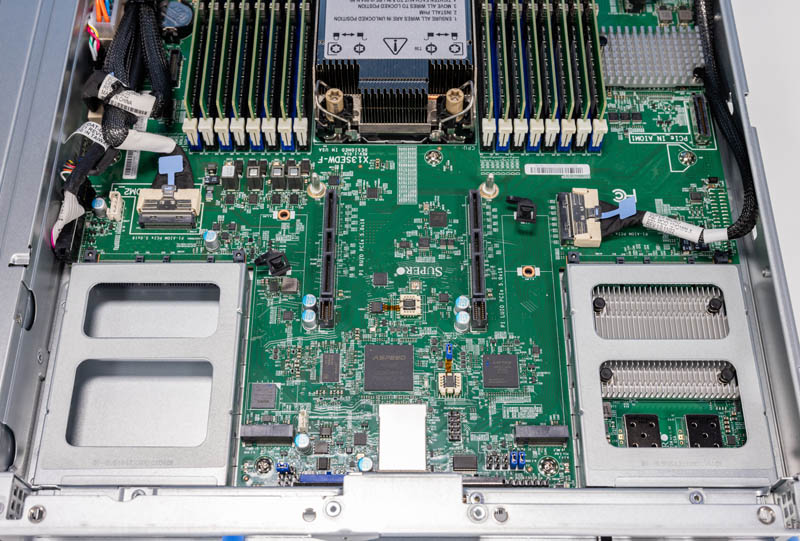
The OCP NIC slots have small cages around them to protect card-to-card contact.
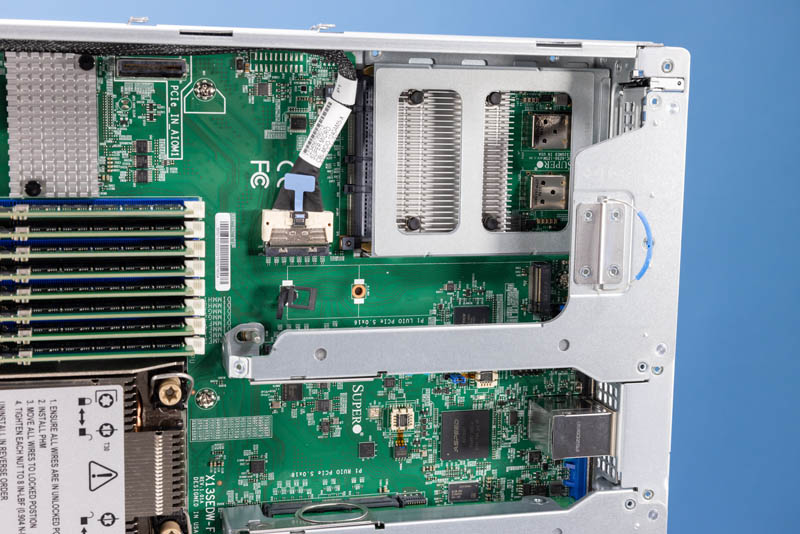
The risers that sit above them have small pull loops which is the first time we have seen that design in Supermicro servers. It worked reasonably well.
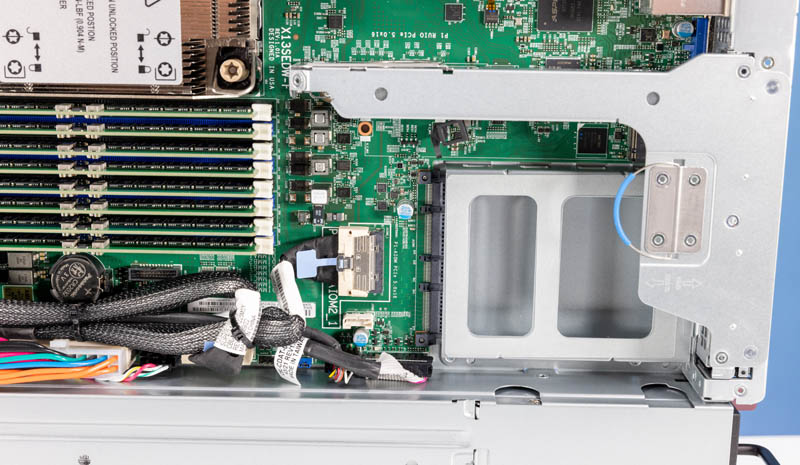
One of the reasons this server would have been impossible previously is just how much I/O is here. Intel massively increased not just the speed, but the number of PCIe lanes in this generation, and that is allowing Supermicro to make such a robust single-socket server platform.
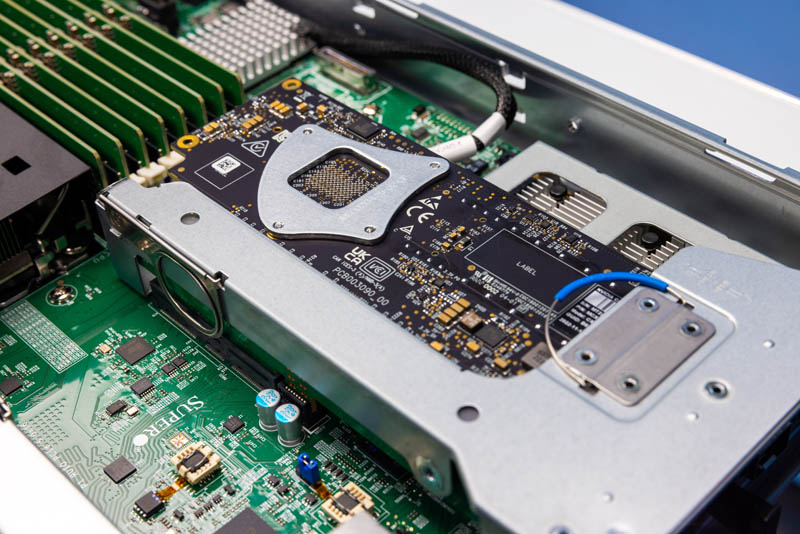
Next, we are going to look at the block diagram to see how that works.




Sike. SuperMicro is a terrible brand who putd out shit products. Tldr: buy a real server.
You choosed a bad day to complain about Supermicro. Yesterday they jumped a 28% in Nasdaq.